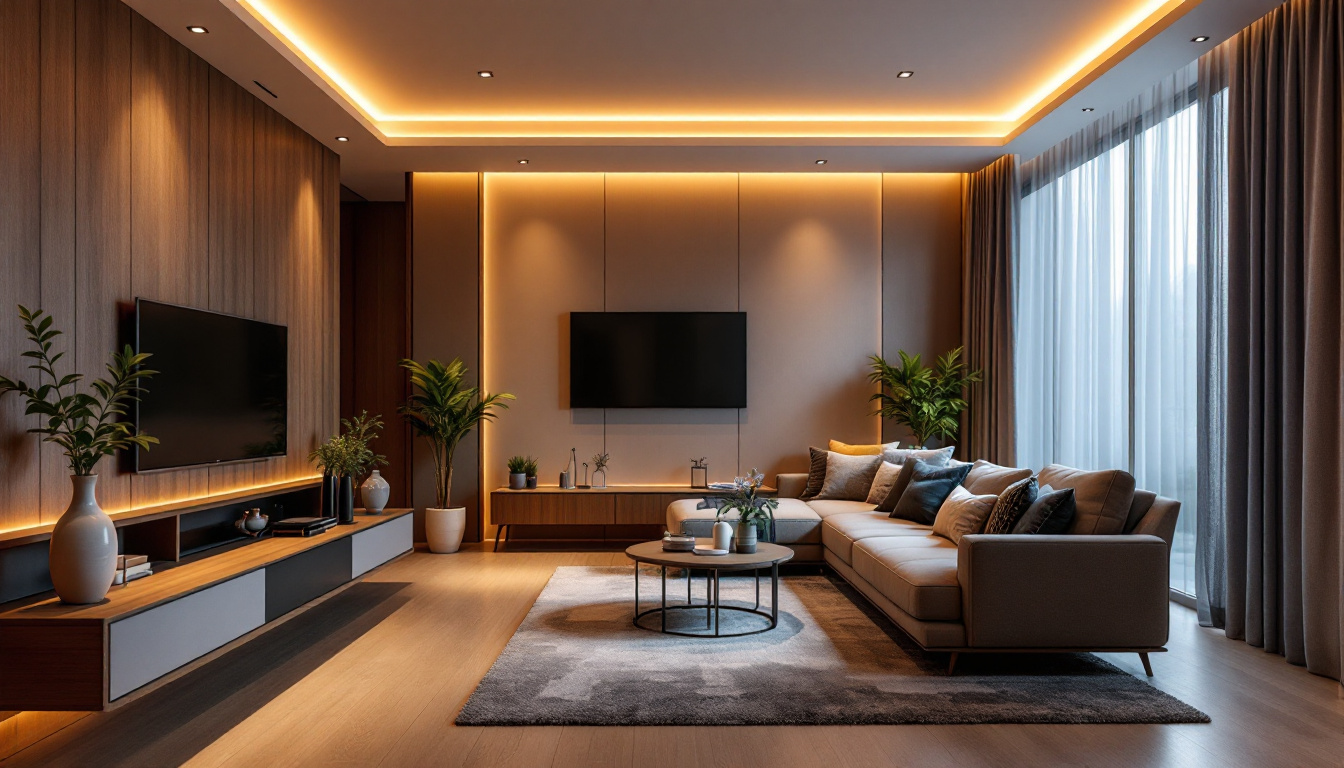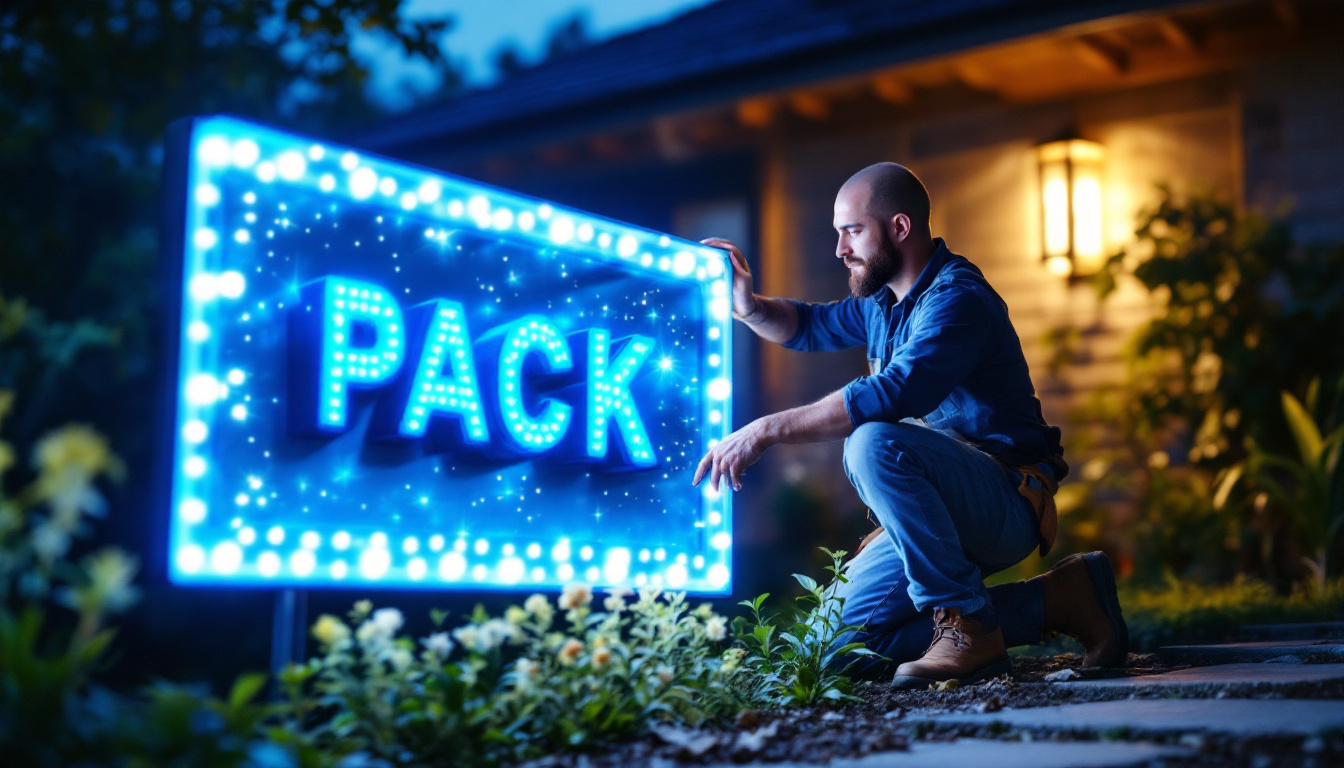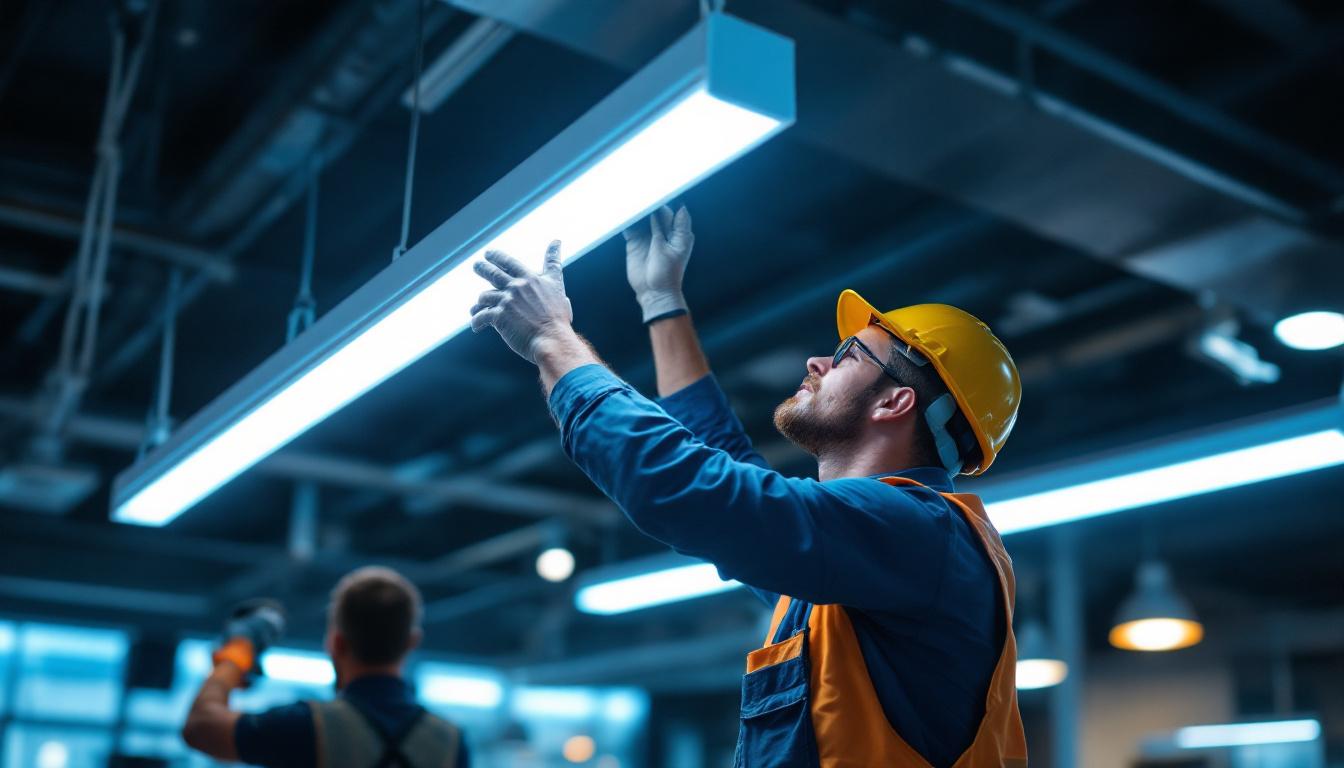
recessed lighting, often referred to as can lighting or pot lighting, has become a staple in modern lighting design. This versatile lighting solution is not only aesthetically pleasing but also functional, making it an essential consideration for lighting contractors aiming to enhance their projects. Understanding the nuances of recessed lighting can elevate any design, creating spaces that are both inviting and practical.
Recessed lighting involves fixtures that are installed into the ceiling, allowing the light to shine downwards without being obtrusive. This design creates a clean, streamlined look, making it ideal for various settings, from residential homes to commercial spaces. The fixtures are typically housed in a cylindrical can that is mounted above the ceiling line, providing a seamless integration into the overall architecture. This unobtrusive design not only enhances the visual appeal of a room but also allows for greater flexibility in furniture arrangement, as there are no hanging fixtures to consider.
There are several types of recessed lighting fixtures available, each catering to different needs and preferences. The most common types include:
The advantages of recessed lighting are manifold. One of the primary benefits is its ability to provide ambient lighting without taking up visual space. This is particularly useful in smaller rooms where traditional light fixtures might feel overwhelming. The sleek design of recessed lights can make a room feel more open and airy, contributing to a more spacious atmosphere.
Additionally, recessed lighting can be used to create layers of light. By combining ambient, task, and accent lighting, contractors can craft a dynamic lighting scheme that enhances the functionality and aesthetics of a space. For instance, in a kitchen, recessed lights can illuminate countertops for cooking tasks while also providing soft ambient lighting for dining areas. Moreover, the use of dimmable recessed fixtures allows homeowners to adjust the brightness according to the time of day or occasion, further enhancing the versatility of this lighting solution.
Another significant advantage of recessed lighting is its energy efficiency. Many modern recessed fixtures are designed to accommodate LED bulbs, which consume less power and have a longer lifespan compared to traditional incandescent bulbs. This not only reduces electricity bills but also contributes to a more sustainable living environment. As energy efficiency becomes increasingly important to homeowners and businesses alike, the adoption of recessed lighting continues to grow, making it a popular choice for eco-conscious consumers.
When incorporating recessed lighting into a design, several factors must be taken into account. These considerations can significantly impact the effectiveness and appeal of the lighting scheme.
The height of the ceiling plays a crucial role in determining the placement and spacing of recessed lights. Generally, the higher the ceiling, the further apart the fixtures should be installed. A common guideline is to space the lights approximately one foot apart for every foot of ceiling height.
In spaces with lower ceilings, it’s essential to avoid overcrowding the fixtures, as this can create a harsh and uninviting atmosphere. Instead, a more strategic approach can help achieve an even distribution of light without overwhelming the space.
The choice of bulbs is another critical aspect of recessed lighting design. LED bulbs are increasingly popular due to their energy efficiency and longevity. They come in various color temperatures, allowing contractors to select the right ambiance for each room.
For instance, a warm white light (around 2700K) is often preferred for living spaces, while a cooler light (around 4000K) may be more suitable for work areas like kitchens and offices. Understanding the psychological effects of different color temperatures can help create the desired atmosphere in each space.
Recessed lighting trims come in various styles and finishes, each contributing to the overall aesthetic of the space. From baffle trims that reduce glare to reflector trims that enhance brightness, the options are abundant.
Contractors should also consider the finish of the trim. White trims can blend seamlessly with ceilings, while metallic finishes can add a touch of elegance and sophistication. The choice of trim can significantly influence the overall design, making it a vital consideration in the planning stage.
Recessed lighting is incredibly versatile and can be used in numerous applications. This flexibility makes it a favorite among lighting designers and contractors alike.
In residential settings, recessed lighting is often used in living rooms, kitchens, and hallways. In living rooms, strategically placed recessed lights can create a cozy ambiance, while in kitchens, they can provide essential task lighting over countertops and islands.
Moreover, recessed lighting can be employed to highlight architectural features or artwork, adding depth and character to the space. This adaptability allows homeowners to customize their lighting to suit their lifestyle and preferences.
In commercial environments, recessed lighting is frequently used in offices, retail spaces, and hospitality venues. In offices, it can enhance productivity by providing even, glare-free illumination, which is essential for workspaces.
Retail spaces benefit from recessed lighting as well, as it can highlight products and create an inviting atmosphere for customers. In restaurants and hotels, the right lighting can significantly influence the mood, making it crucial to choose the appropriate fixtures and placements.
Recessed lighting is not limited to indoor spaces; it can also be effectively used outdoors. For instance, recessed lights can be installed in soffits or overhangs to illuminate patios and decks, creating a welcoming outdoor environment.
Additionally, outdoor recessed lighting can enhance safety and security by illuminating pathways and entryways, making it a practical choice for homeowners looking to improve their outdoor spaces.
Successful installation of recessed lighting requires careful planning and execution. Contractors must pay attention to various factors to ensure a seamless integration into the overall design.
Before installation, it’s essential to plan the layout meticulously. This involves determining the number of fixtures needed, their placement, and the type of lighting required for each area. Using software or design tools can help visualize the layout and make adjustments before installation begins.
Contractors should also consider the electrical load and ensure that the circuit can handle the additional fixtures. Proper planning can prevent issues down the line and ensure a smooth installation process.
Wiring is a critical component of recessed lighting installation. It’s essential to follow local building codes and regulations to ensure safety and compliance. Using the correct gauge wire and ensuring secure connections are vital steps in the installation process.
Additionally, contractors should consider using dimmer switches to provide flexibility in lighting control. This can enhance the functionality of the recessed lights and allow for customization based on the time of day or activity.
Once the installation is complete, testing the lights is crucial. This step allows contractors to identify any issues, such as flickering or uneven lighting, and make necessary adjustments. Proper testing ensures that the lighting performs as intended and meets the client’s expectations.
Adjusting the angle of adjustable fixtures can also enhance their effectiveness, allowing for targeted lighting where it’s needed most. This attention to detail can significantly impact the overall success of the lighting design.
The world of recessed lighting is constantly evolving, with new trends emerging to meet the demands of modern design. Staying informed about these trends can help contractors provide innovative solutions to their clients.
One of the most significant trends in lighting design is the integration of smart technology. Smart recessed lighting allows homeowners to control their lighting remotely via smartphones or voice-activated devices. This technology can enhance convenience and energy efficiency, making it a popular choice among tech-savvy clients.
Moreover, smart lighting systems can be programmed to adjust based on the time of day or occupancy, further optimizing energy use and enhancing the overall user experience.
Minimalism continues to be a dominant trend in interior design, and recessed lighting fits perfectly within this aesthetic. The clean lines and unobtrusive nature of recessed fixtures allow for a clutter-free look, making them ideal for modern spaces.
Contractors can embrace this trend by offering sleek, low-profile fixtures that blend seamlessly into the ceiling, providing effective lighting without detracting from the overall design.
Color-changing recessed lighting has gained popularity, allowing homeowners to customize the ambiance of their spaces. With the ability to switch between different colors and intensities, these fixtures can transform a room’s mood with just a touch of a button.
This versatility appeals to clients looking for dynamic lighting solutions that can adapt to various occasions, from casual gatherings to formal events.
Recessed lighting is a powerful tool in the arsenal of lighting contractors. Its versatility, aesthetic appeal, and functionality make it an essential consideration in any lighting design project. By understanding the various types of fixtures, design considerations, applications, and trends, contractors can create stunning and effective lighting solutions that meet the needs of their clients.
As the demand for innovative lighting designs continues to grow, embracing recessed lighting can set contractors apart in a competitive market. By staying informed about the latest trends and technologies, lighting professionals can ensure their projects not only meet but exceed client expectations, creating spaces that are beautifully illuminated and functionally sound.
Ready to take your lighting designs to the next level? At LumenWholesale, we provide lighting contractors with the high-quality, spec-grade recessed lighting products you need at prices that can’t be beaten. Say goodbye to local distributor markups and hello to our extensive selection that meets the highest industry standards. With free shipping on bulk orders, you can trust that you’re getting premium lighting at the best value — without any hidden fees. Elevate your lighting projects by choosing LumenWholesale, where quality, affordability, and convenience come together. Wholesale Lighting at the Best Value is just a click away.

Discover essential tips for lighting contractors to seamlessly integrate 2 pack solar light signs into projects.

Explore the critical differences between LED and fluorescent tubes in this insightful guide tailored for lighting contractors.

Discover essential tips for selecting the perfect LED light kit and learn how to sidestep common pitfalls in your lighting projects.

Discover how lighting contractors can master the 4Ft T8 light fixture with expert tips, benefits, and industry insights.